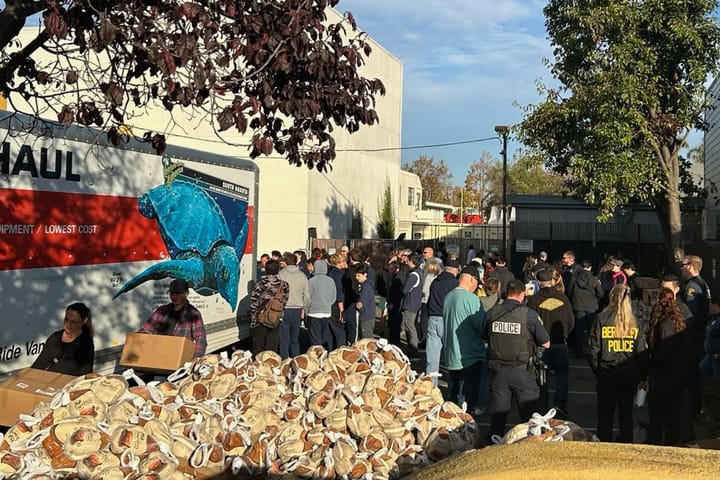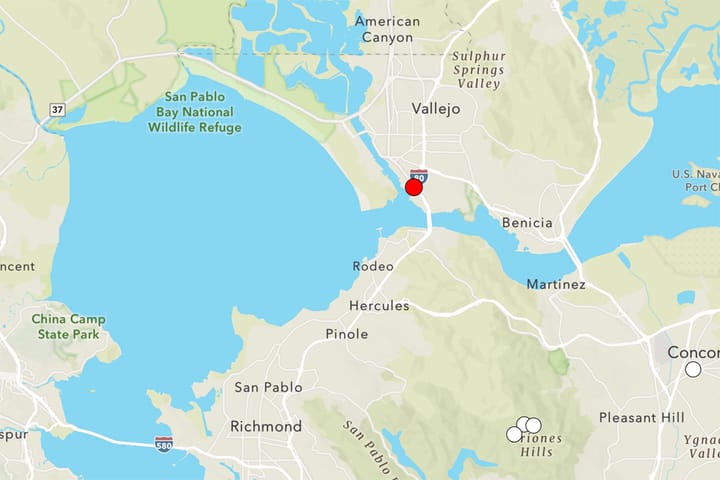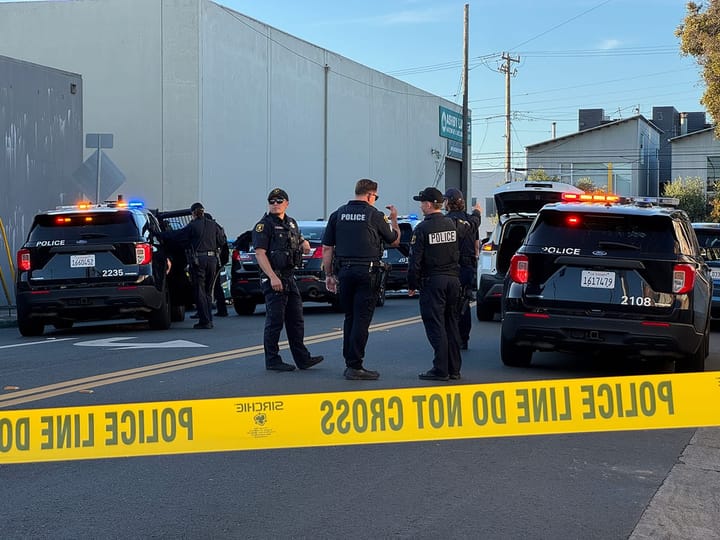Berkeley encampment fire puts the focus on Codornices Creek
Community members are concerned about impacts on businesses and protected steelhead trout. They say Berkeley must do more.
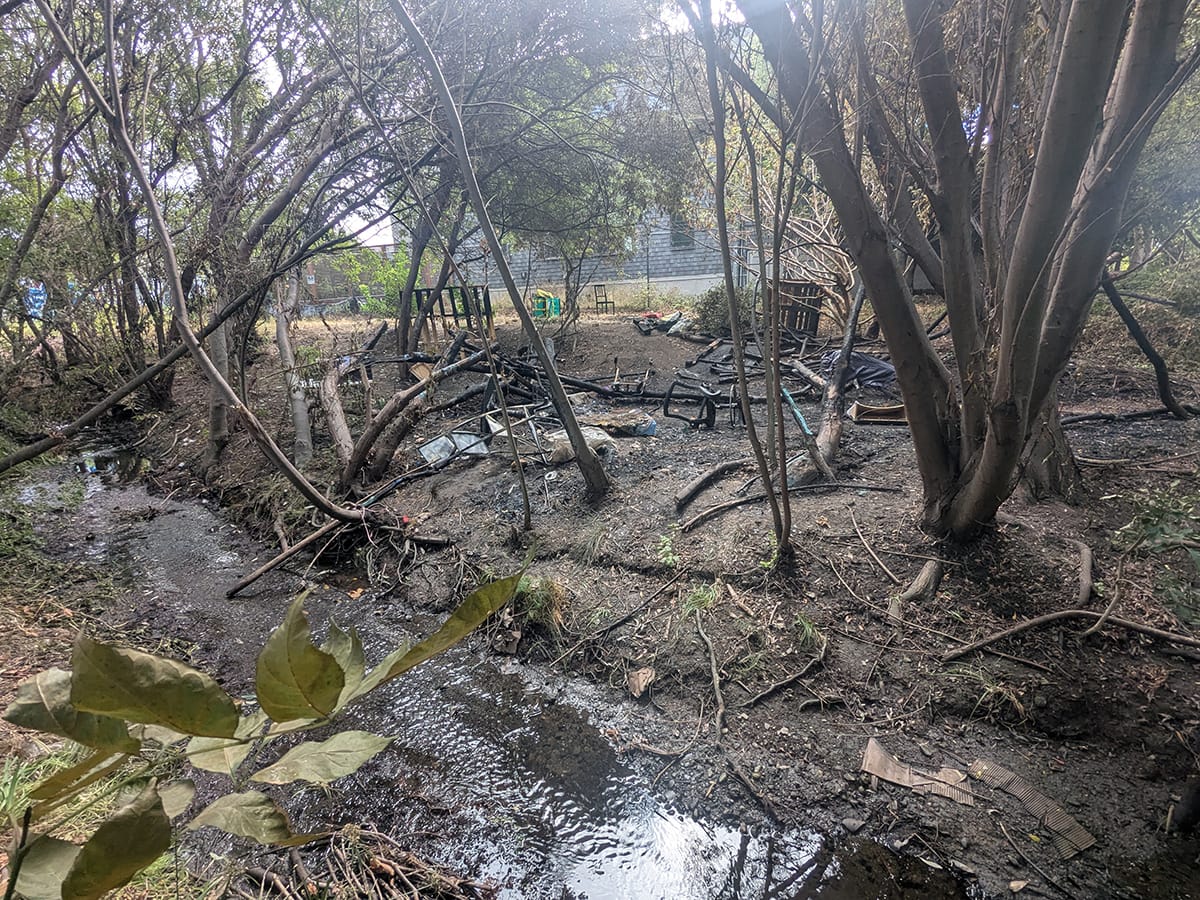
A recent encampment fire alongside Codornices Creek on the Berkeley-Albany border has put new urgency on chronic problems in the neighborhood.
The fire, on Monday, Sept. 29, tore through the sprawling homeless encampment, which spanned about 1,500 feet on the fragile bank of Codornices, "one of the few East Bay creeks to support a steelhead population."
Video of the fire showed large flames just across the fence from Urban Adamah as huge clouds of smoke billowed into the air.
A woman shrieking in fear and a man screaming for help could be heard in the background as fire trucks approached, horns and sirens blaring.
Humberto Ortiz, owner of Griffin Motorwerke on Sixth Street, said he was working in his office just 50 yards away when he looked outside and saw large plumes of black smoke pouring out of the trees.
He went outside and heard people yelling, along with loud pops and explosions. To him, it sounded like lithium batteries erupting.
Across the creek, many residents at University Village were panicking, shouting about getting their pets out of the building.
"When you see a fire literally at your doorstep, I don't know what I would do. But it was understandable," Ortiz said.
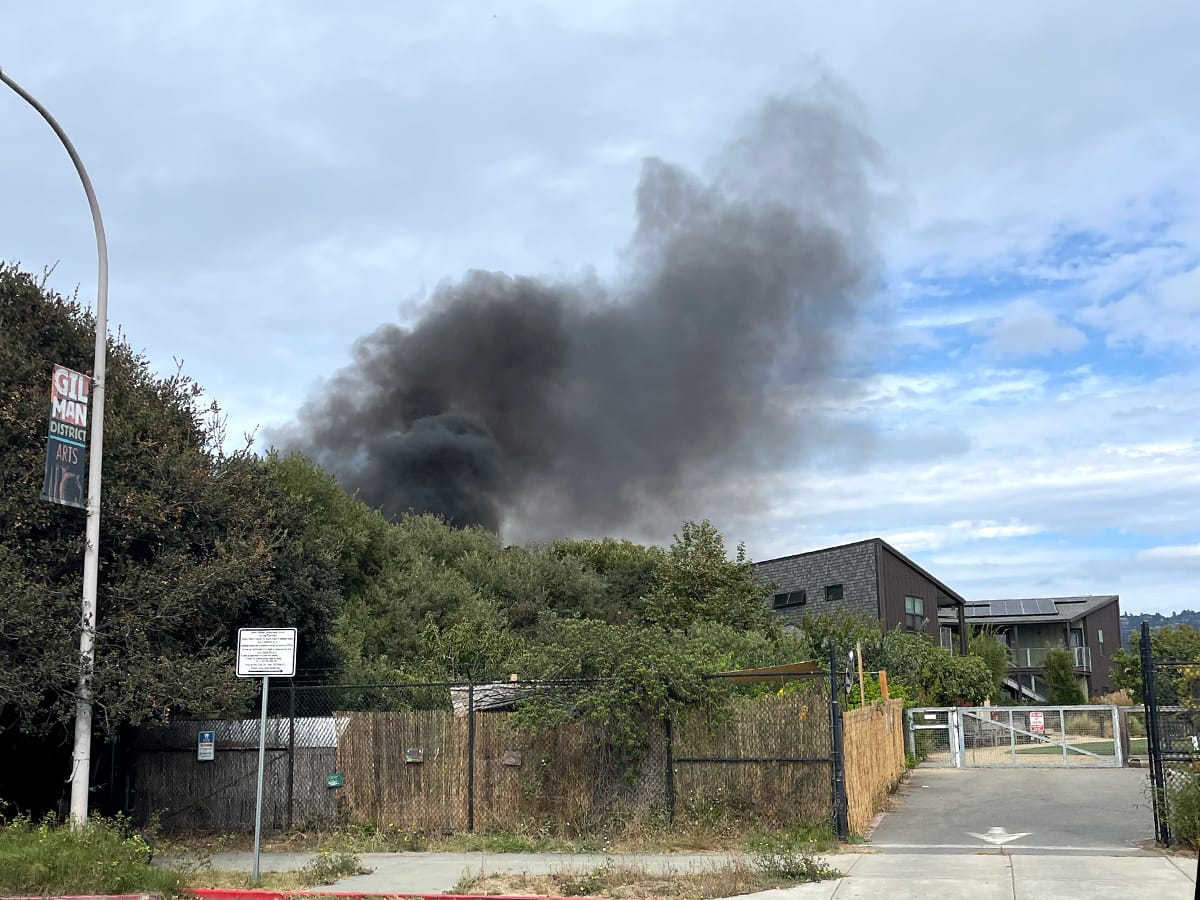
The Albany Fire Department, just up the street, responded quickly, pulling into parking spots at University Village. That was as close as they could get to the blaze.
Access was limited, Ortiz said. Firefighters had to aim their hoses down through the fence line, between trees, to get to the fire on the opposite side of the bank.
"They put it out relatively quickly," he said. "I give them lots of credit for that."
Authorities said no one was hurt in the fire and that the encampment was abandoned when they got there.
A cooking fire may have been the cause — although there has been no official determination as of this week.
Creek advocates say they are concerned about the fate of the vulnerable ecosystem if encampments are allowed to remain — particularly as the rainy season approaches.
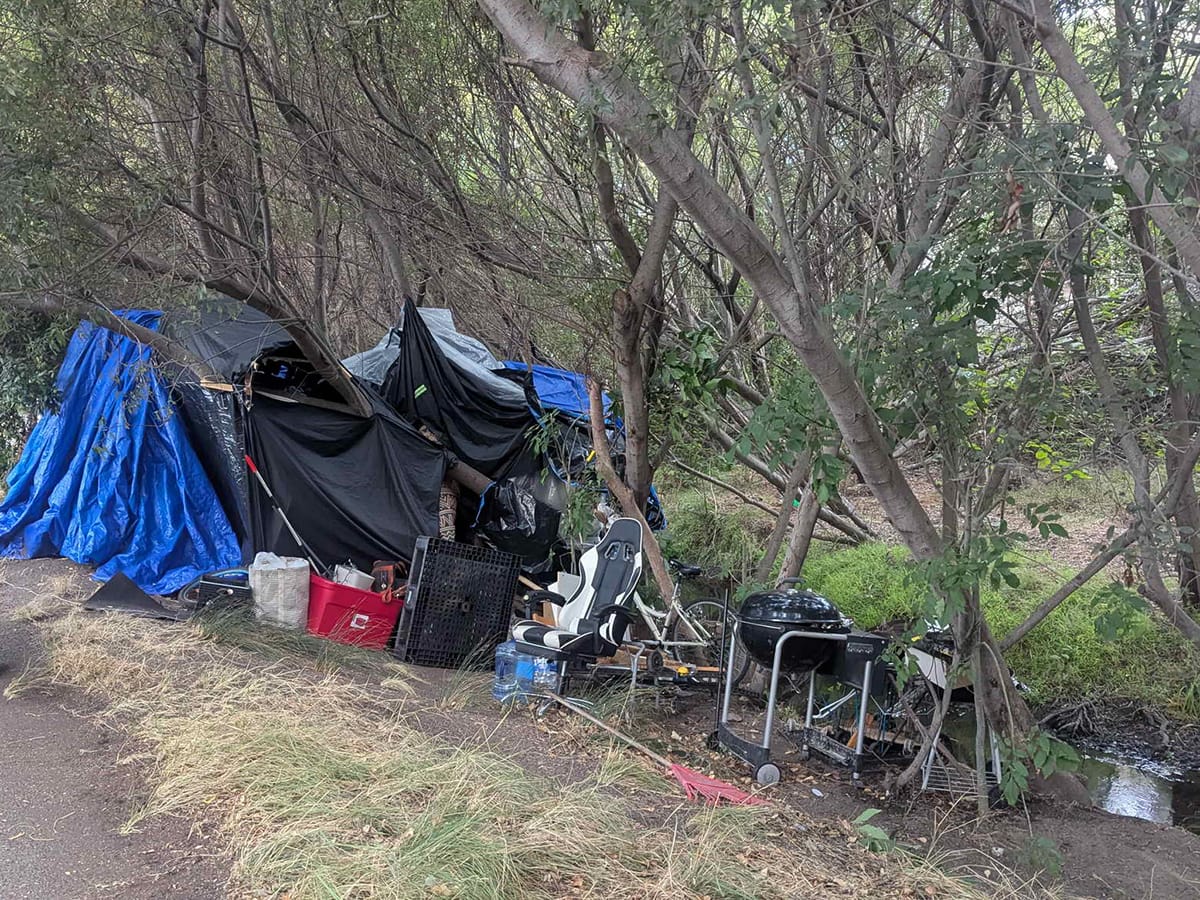
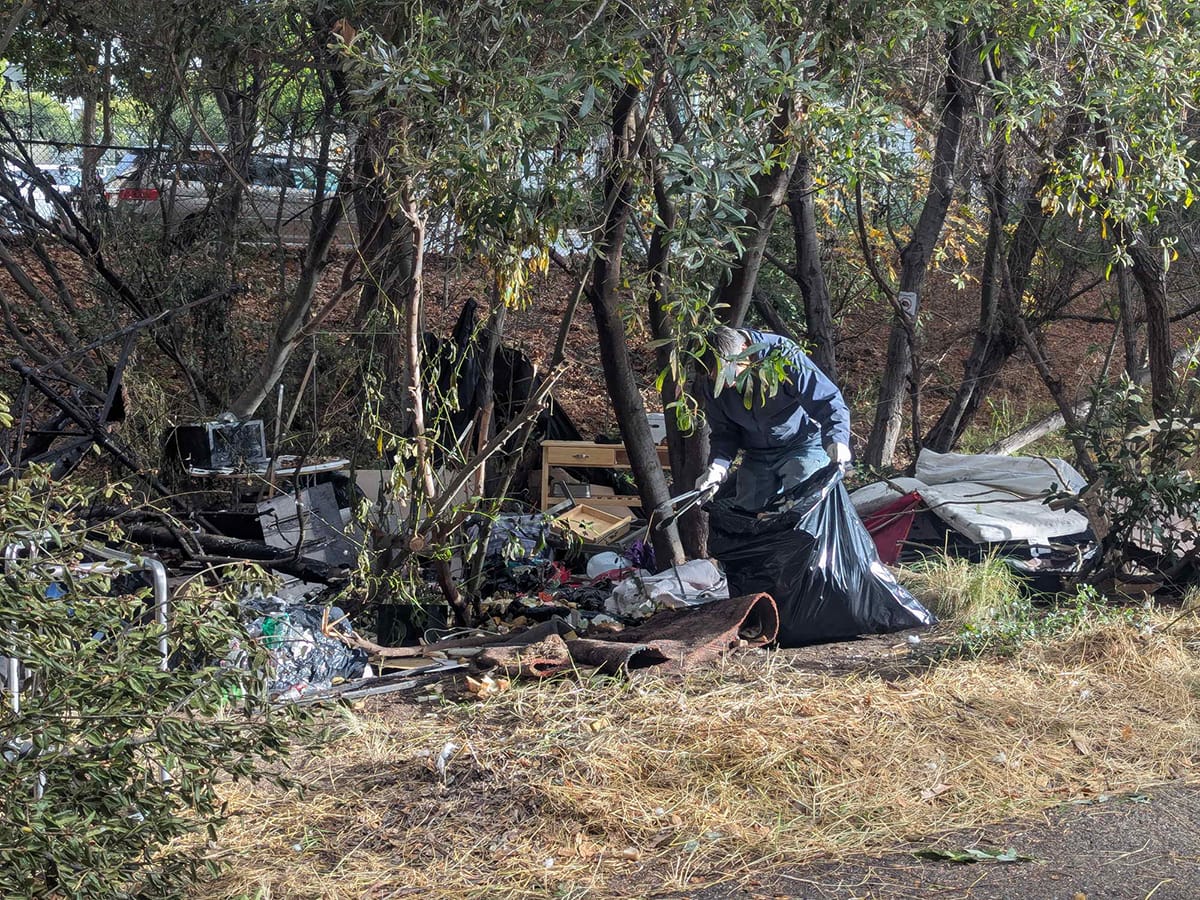
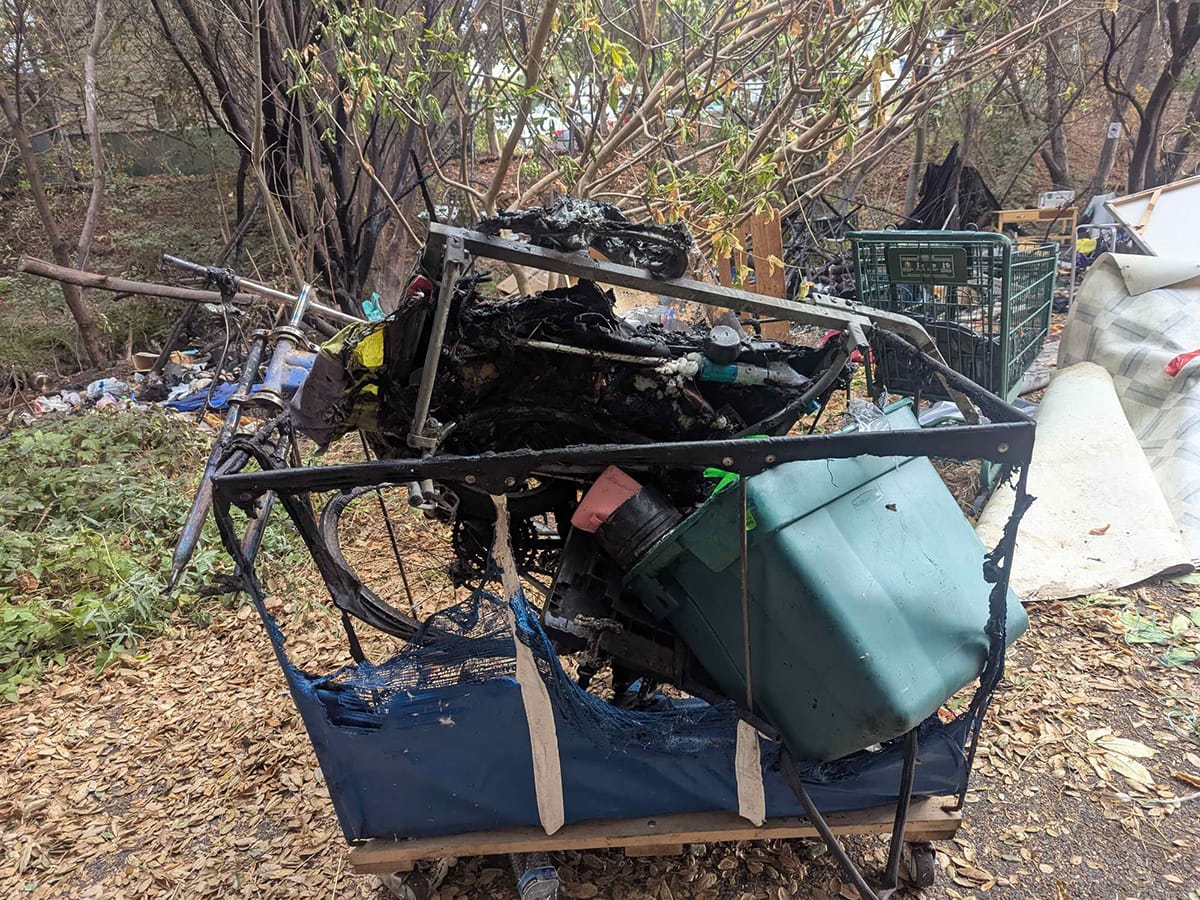
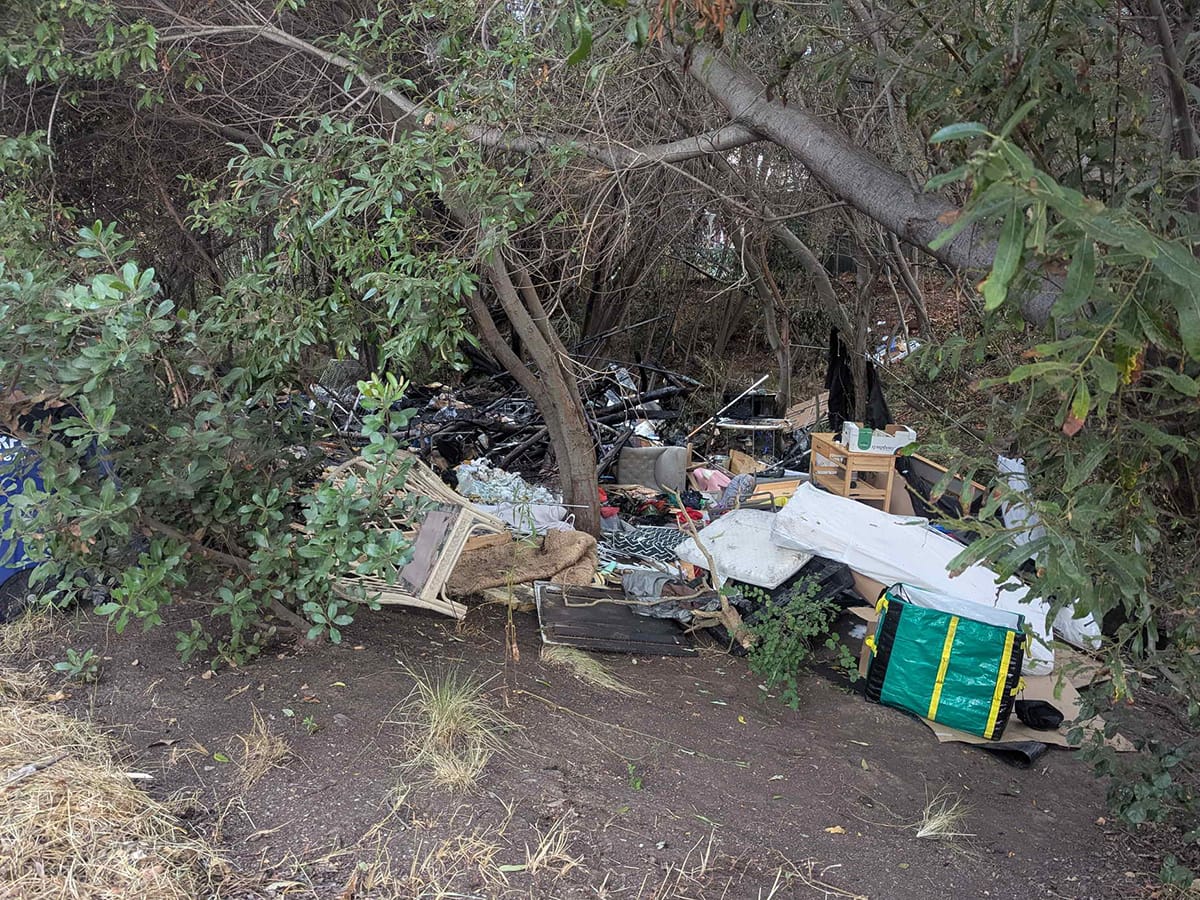
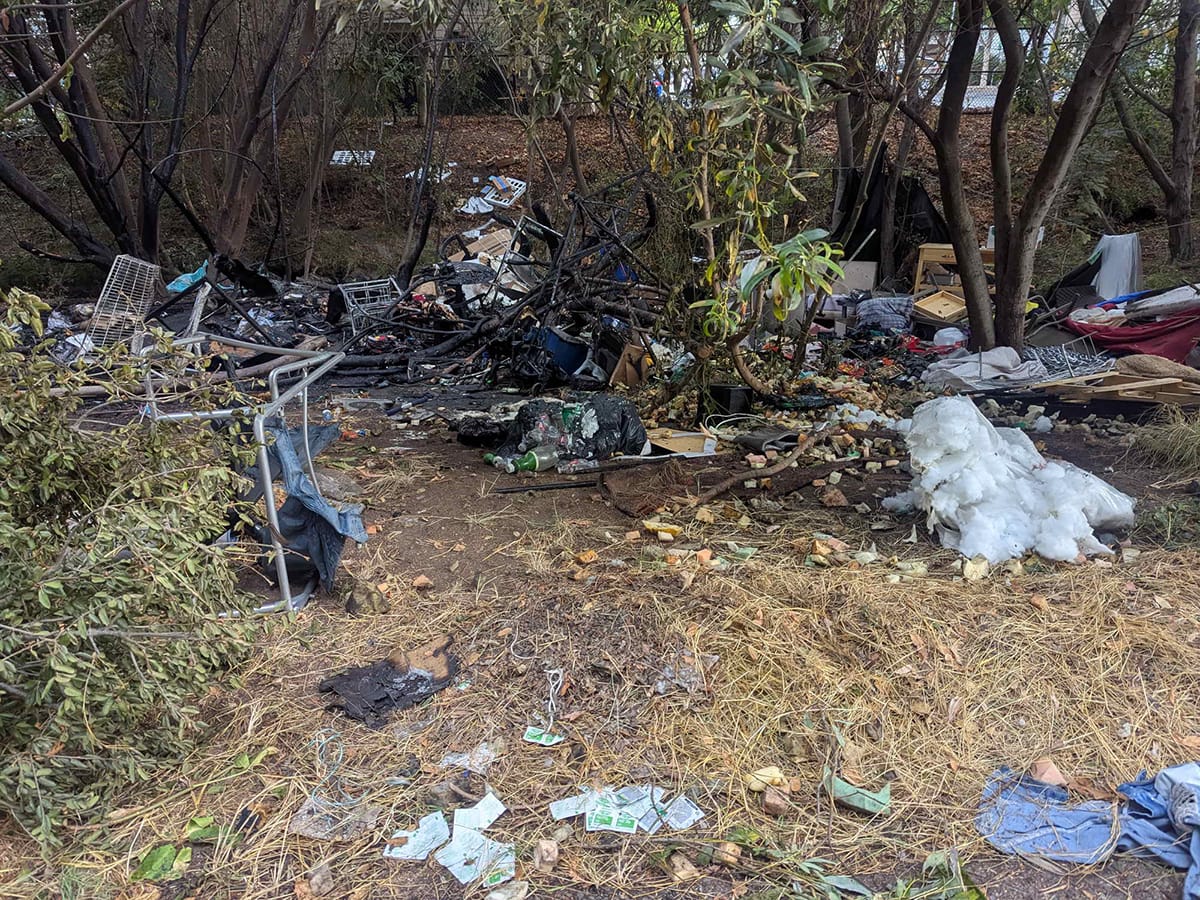
Portions of the encampment after the fire. Friends of Five Creeks
Stephanie Antalocy was walking along the creek just an hour before the fire and was surprised to see the elaborate encampment that would ultimately burn: wooden pallets and "random" boards standing 7 feet tall, covered by layers and layers of plastic sheeting.
"It was a very thorough job that they did," she said. "That is what I think was so flammable."
"The fire was maybe 10 feet from a wooden structure at Urban Adamah. If the trees were dry," she said, trailing off. "It's too close."
Antalocy is a longtime board member and volunteer with Friends of Five Creeks, a decades-old nonprofit based in Berkeley that works to improve local creeks and watersheds.
Antalocy said she and others had been "heartsick" to see the damage wrought by the fire after all the care that had gone into restoring the natural landscape: planting natives, controlling invasives and maintaining Codornices over the years.
"It just seemed so dangerous and such a nightmare version of the creek," she said.
For those who have stumbled upon it or otherwise gotten to know it, Codornices (Spanish for "quail") has left its mark.
Tucked away on a quiet section of the Berkeley-Albany border, it feels like a secret world, an easy escape from the nearby hubbub of San Pablo Avenue.
But, if you don't live in the neighborhood, you may never have seen it. That's part of its charm.
"To me, it's precious to have a bit of wildness without driving somewhere," Antalocy said. "It's just so valuable to me. And I think to many, many other people, too."
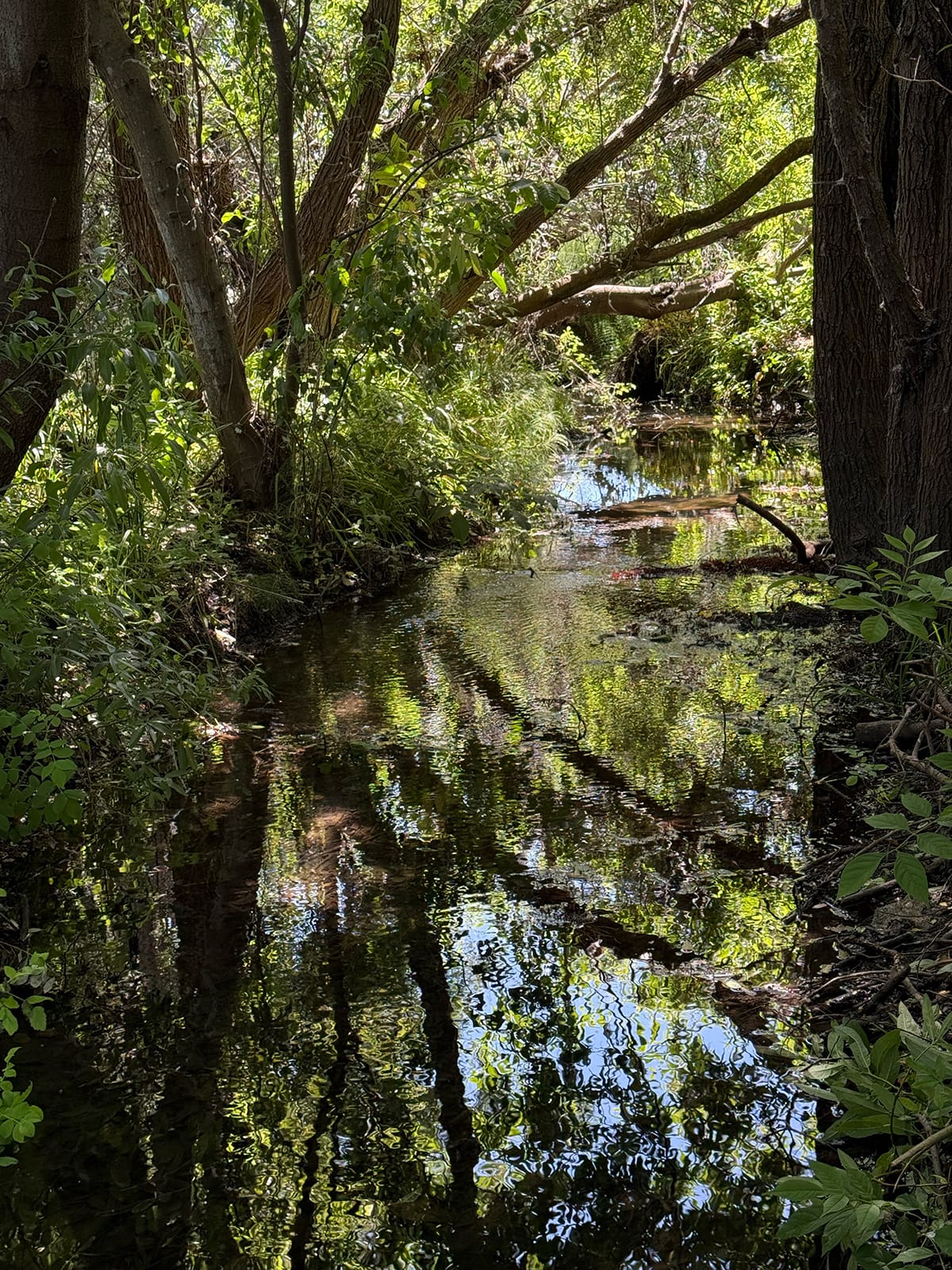
Joan Sprinson is one of them.
Sprinson lives in the neighborhood and regularly uses the pathway along Codornices Creek to bike to the Bay Trail.
Earlier this year, she became so captivated by the urban oasis that she did a photo project there.
"It's a stunningly beautiful area," she said. "It's a gift to all of us. I just feel like it's a very special place — and a lot of people have worked hard to make it so."
But the natural beauty isn't its only draw.
Some have made their way to the creek to escape the attention of authorities or housed residents, particularly as Berkeley steps up enforcement in other parts of town.
The robust, leafy foliage along the waterway provides privacy and a refuge.
Tents in the neighborhood aren't anything new. But neighbors say there are starting to be more of them.
A longstanding homeless encampment in the Harrison Street corridor isn't far away. An ongoing legal battle in federal court has slowed city efforts to remove it.
And, as the city has cleared other encampments in Berkeley this year, including those at Civic Center and Ohlone parks, and along the Ohlone Greenway, neighbors say more tents have popped up next to Codornices Creek.
Sprinson said she started noticing an uptick in June, including a large tent, with a solar panel and an antechamber, that completely blocks the sidewalk and bike path.
"It's impassable," Sprinson said. "You have to go off the trail, and it's not always safe for people to do that."
She noted that many people "of all skillsets and capacities" use the pathway, including families with children from UC Berkeley's University Village and seniors from the Belmont Village assisted living complex right next door.
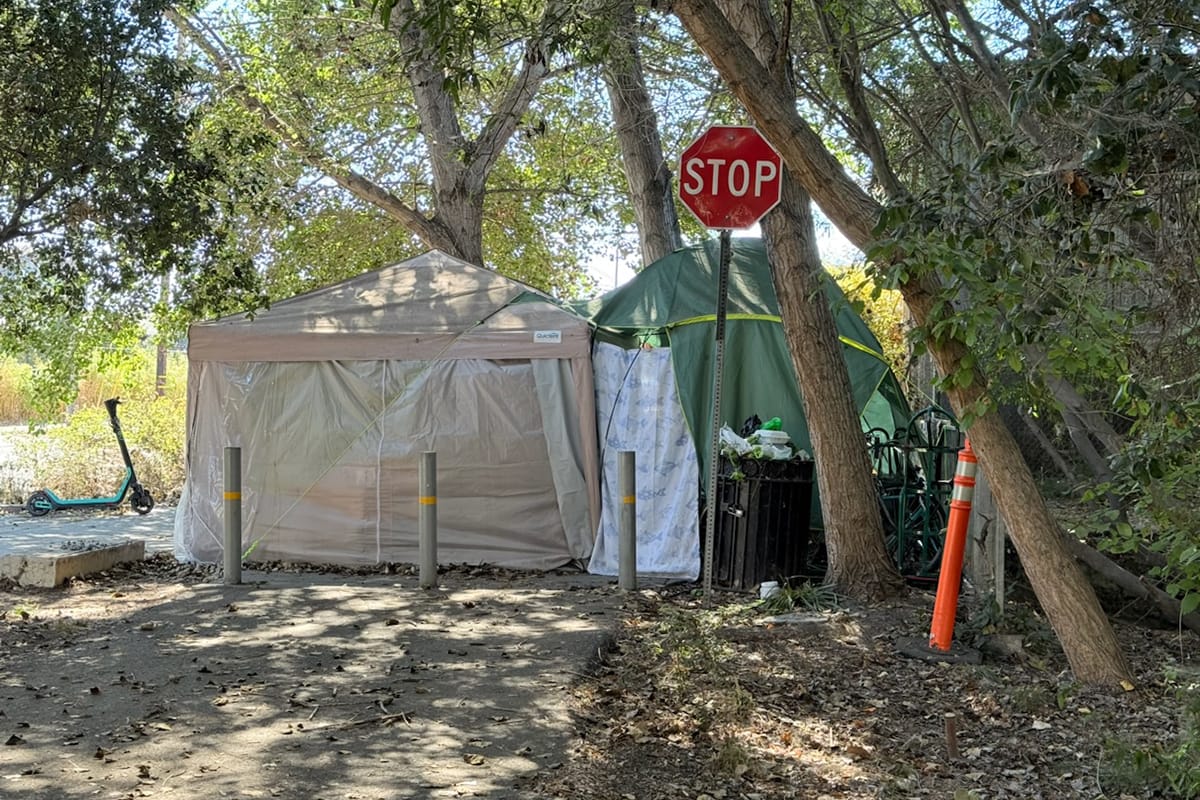
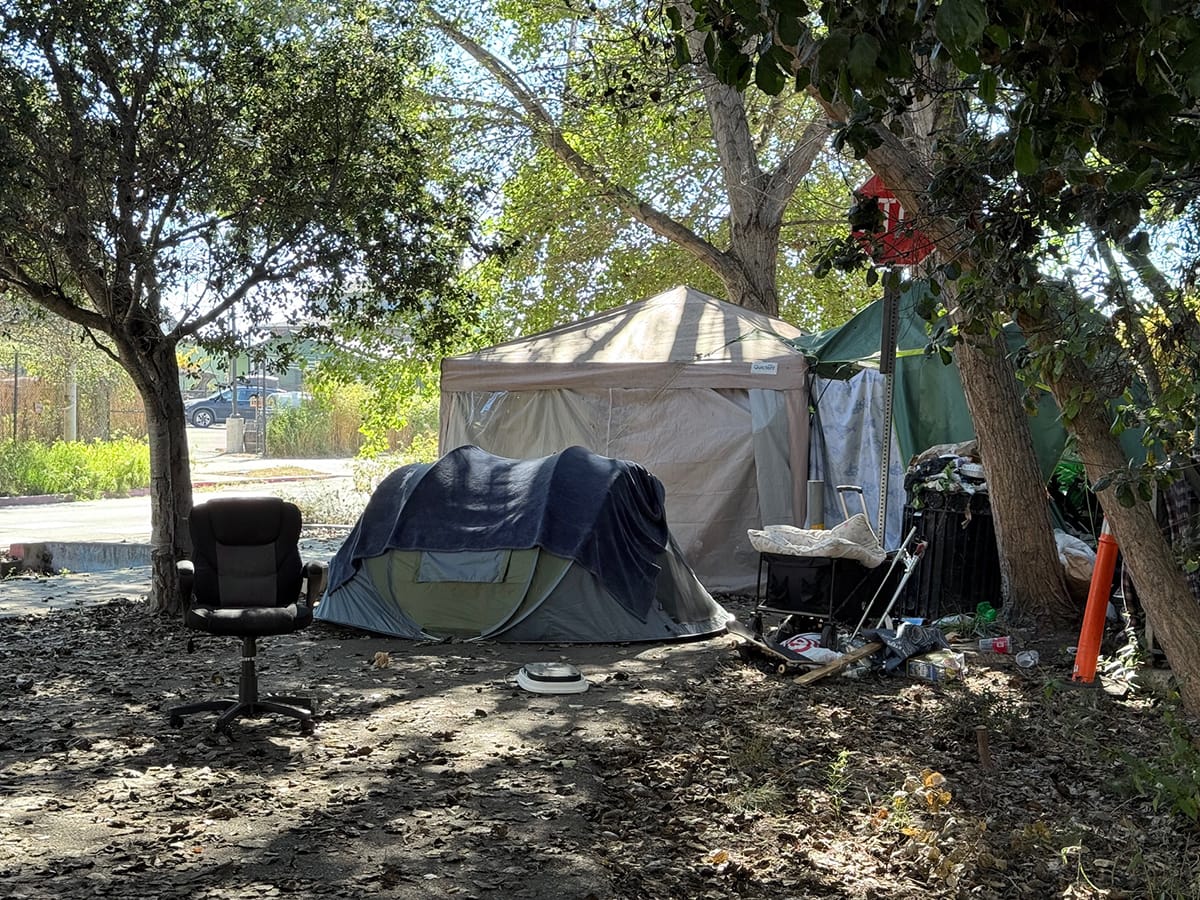
Sprinson was so upset by the blocked pathway and the growing number of tents in the riparian corridor along the creek that she contacted the city about it.
To date, little if anything has been done.
It wasn't just the tents, she said, but the items proliferating in the camps, from bicycles and shopping carts to tarps and apparent debris.
"People don't get rid of things. It's just more and more," she said. "Every time you go through, it's worse."
Sprinson and others said they don't understand why the city isn't doing more to tackle the violations — not only to remove the encampments but to post signage to discourage camping and dumping.
"It's basically just being trashed," she said. "It's a total disaster."
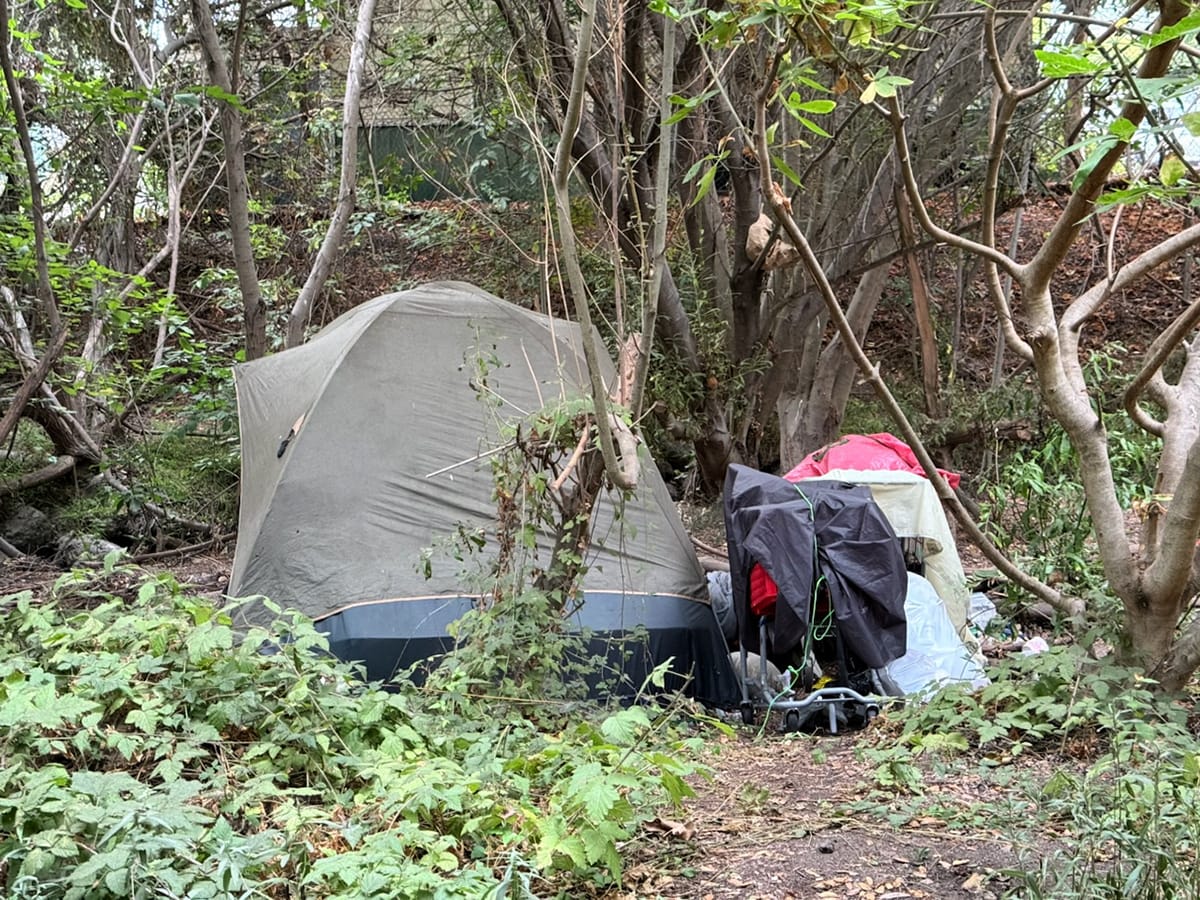
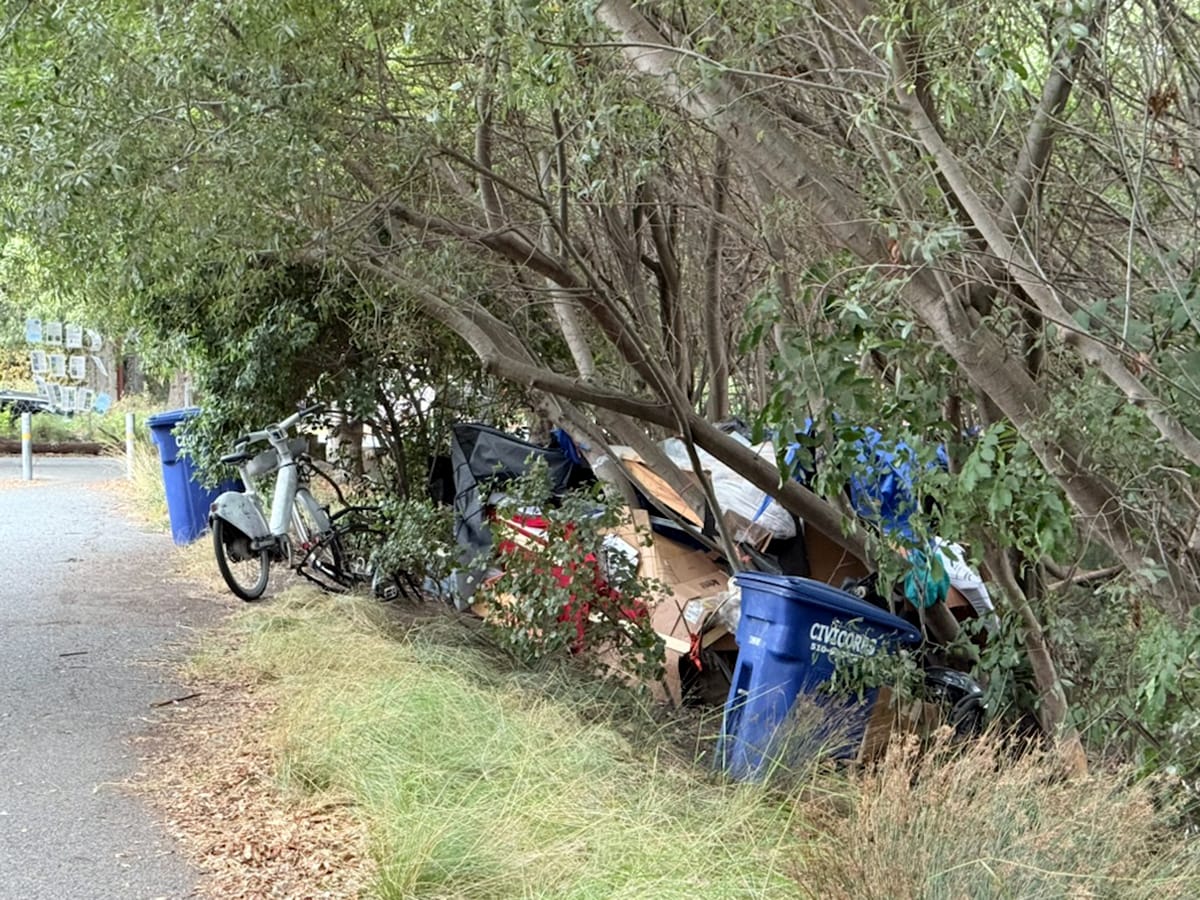
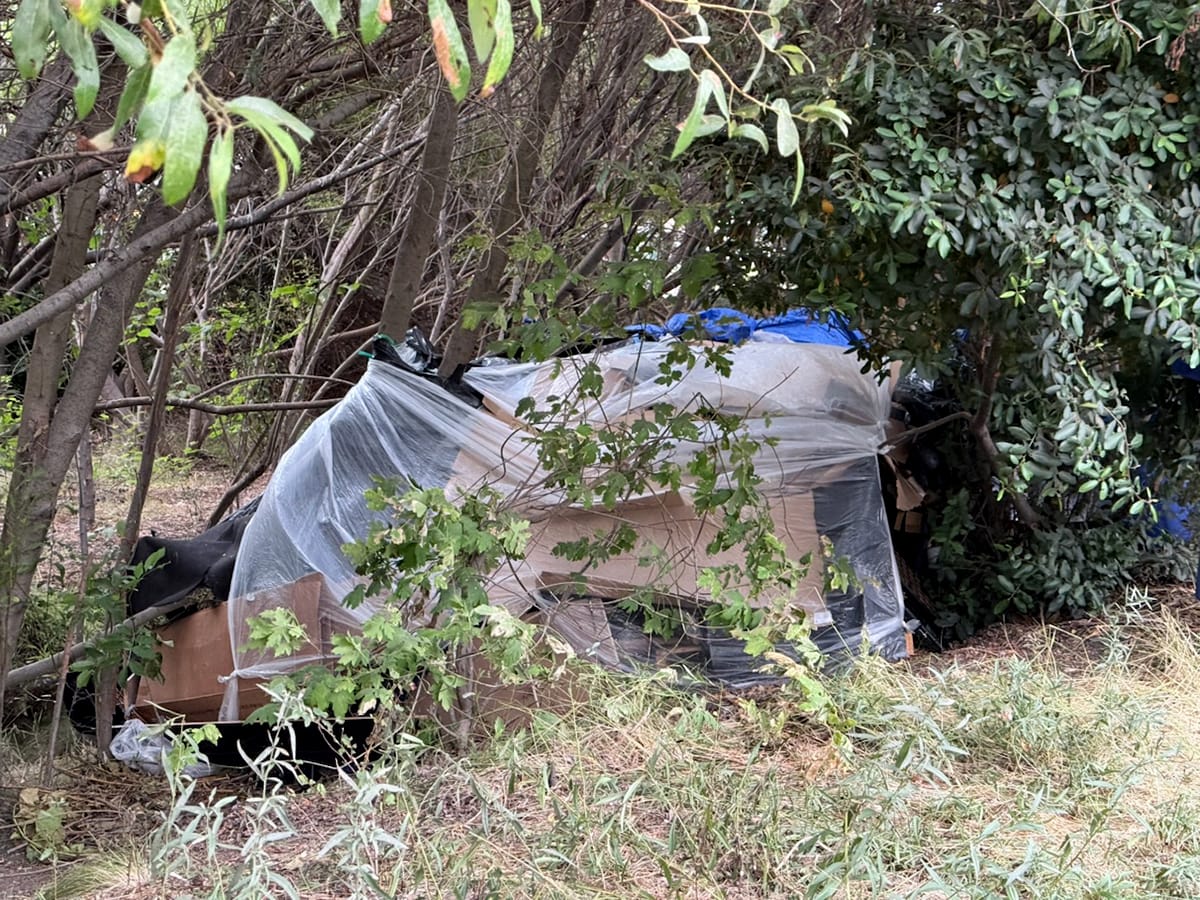
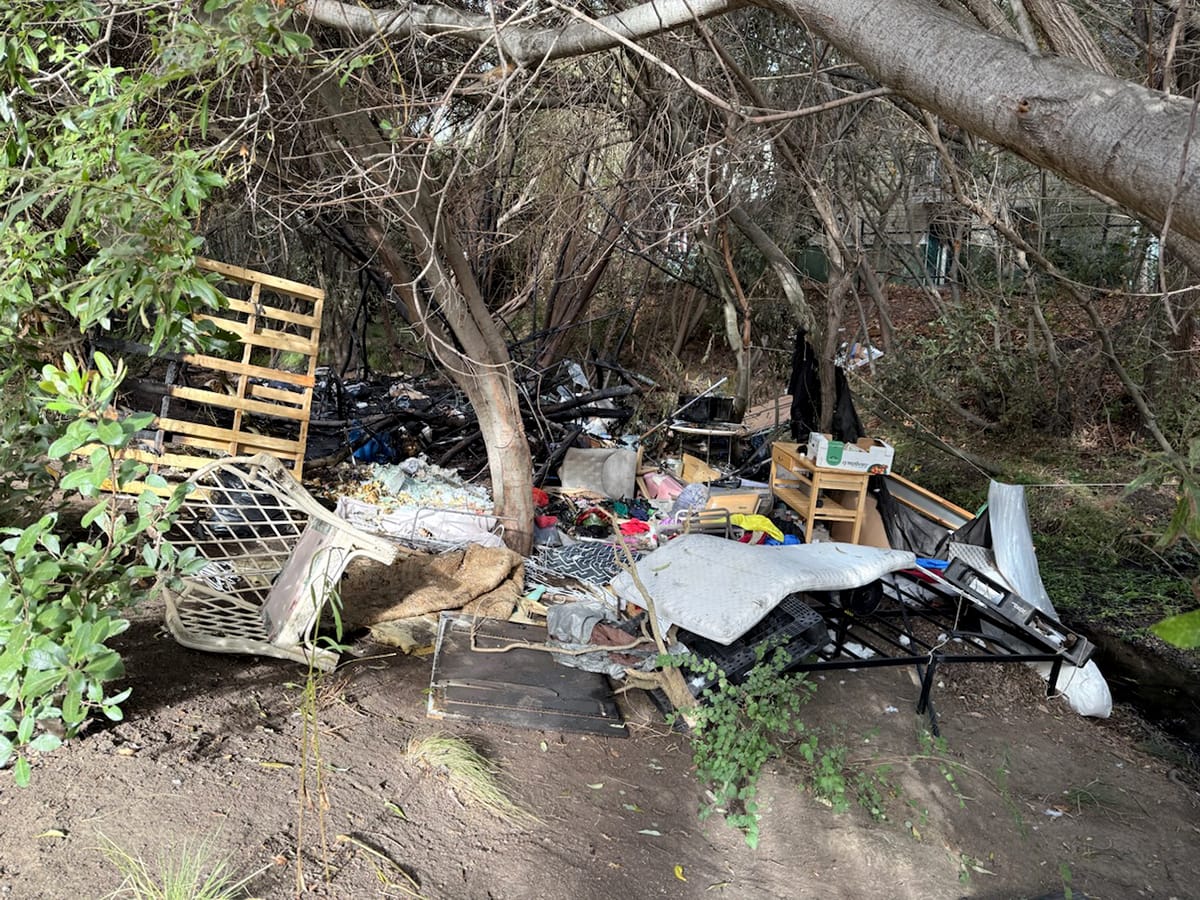
Some of the tents along Codornices Creek. Joan Sprinson
After a largely hands-off policy during the early years of the pandemic, the City Council approved new rules in September 2024, put forward by northwest Berkeley City Council rep Rashi Kesarwani, focused on clearing problematic encampments.
But the regulations that allow tent removal apply to city streets — not natural areas, creek supporters say.
The city has other laws that restrict camping in parks, but those don't seem to apply either.
There is designated parkland adjacent to the creek, not only Fielding Field but also the well-used Gabe Catalfo sports fields and Terrence McCrary Jr. Memorial Skate Park at Harrison Park.
Part of the challenge may be the complex web of jurisdictions in the area: the cities of Berkeley and Albany, and also UC Berkeley and the U.S. Postal Service, not to mention private landlords and their tenants, such as Urban Adamah and Covenant Wines on Sixth Street just south of the creek.
Covenant and several nearby businesses, including Fieldwork Brewing, Boichik Bagels and Acme Scenery Company, sued the city last year over its handling of neighborhood homeless encampments, particularly in the Harrison corridor.
(The lawsuit is ongoing.)
Jeff Morgan, Covenant co-founder, said the creek had become the "designated toilet and dumping ground for all sorts of waste that is created in these illegal encampments."
Morgan said he'd been repeatedly disappointed by the city's responses to his reports of issues associated with tents in the neighborhood.
"Right now, the encampment is larger than I've ever seen it, and I've been here 11 years," he said. "I don't expect perfect solutions — but I expect some kind of intelligent and lucid response to a very dangerous problem for all us."
Morgan said he had just left the winery for a meeting last week about 20 minutes before the encampment fire broke out.
His appointment was interrupted by frantic texts from his daughter, who also works at Covenant.
She told him there had been four or five large explosions as the massive conflagration erupted.
That was followed by "people streaming out of the creek area, clutching whatever possessions they could grab."
"She couldn't believe how big the fire was," Morgan said. "It was perilously close to Urban Adamah."
He said he hated to think what could have happened had the fire been closer to his property, which is gated off, but also vulnerable.
"The potential for disaster is large," he said, not to mention the ongoing health issues related to the encampments: used needles, rat infestations, fecal matter.
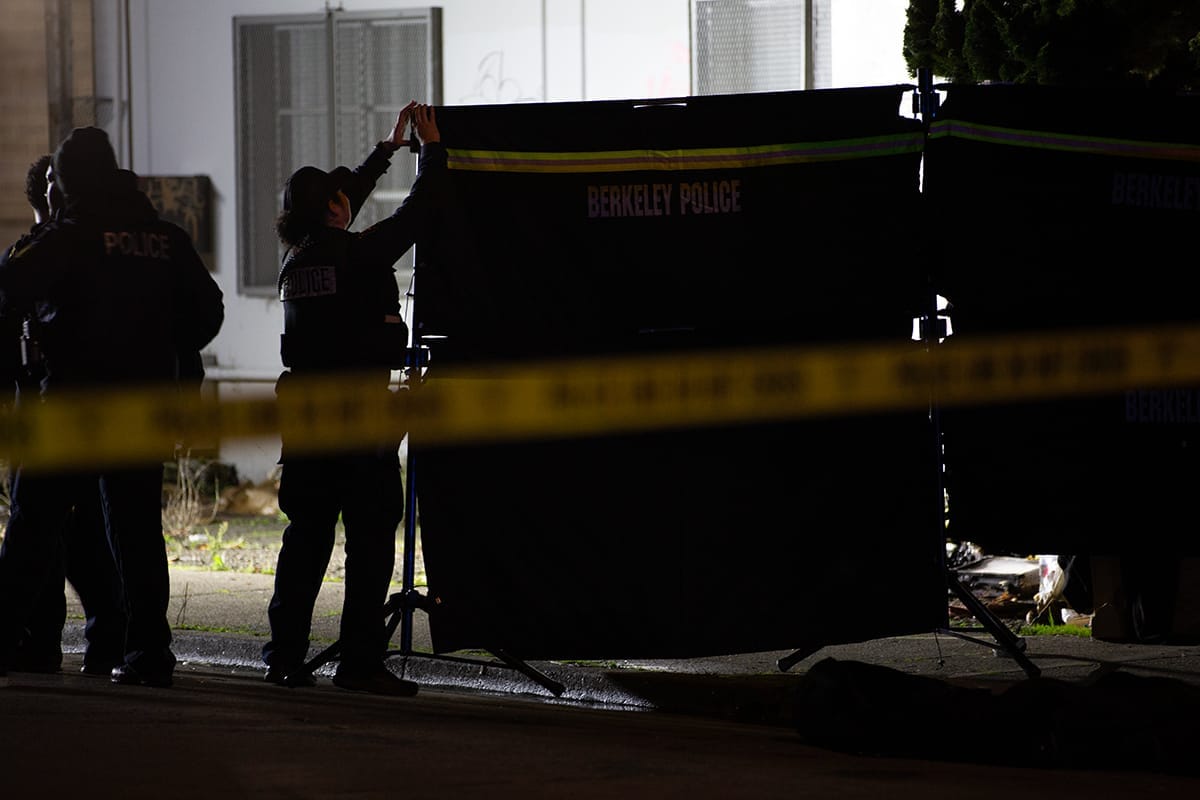
And unsheltered individuals themselves often pay the highest price.
In January, a woman was found dead in her tent after it caught on fire on Fifth Street just south of Harrison Street.
Others in the neighborhood have been subjected to random violence, including a BB gun attack.
In May, an RV exploded on Seventh Street not far from a nearby building.
Many other incidents never make the news.
"I can't blame anybody in particular — aside from the city," Morgan said.
He said municipal workers as well as local politicians should spend more, and do more, to tackle the issue of Berkeley's hazardous encampments. He called for a coordinated action plan, including support for unhoused residents.
"You can't just push the problem to the side and expect it to go away," Morgan said.
City: "Full closure of the encampment" is coming
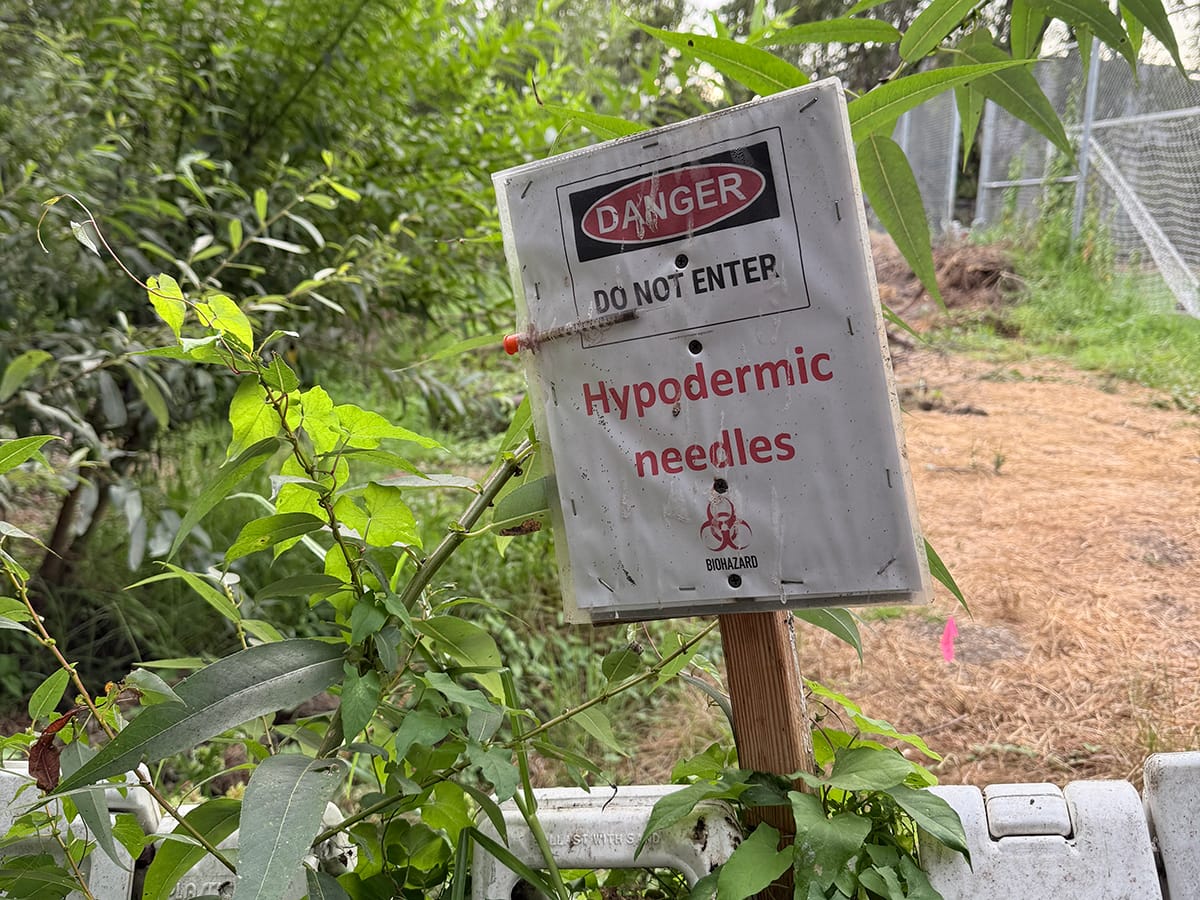
Peter Radu, who oversees the city's encampment work, said Berkeley is taking the neighborhood concerns seriously. But there are limits.
Berkeley workers were at the site of the fire last week Wednesday to remove some of the debris.
And Radu said he is now "working to find a date … for a full closure of the encampment."
(It wasn't immediately clear whether that closure would apply to all the tents along Codornices Creek, which runs above ground from San Pablo Avenue to the railroad tracks, or just a small portion of it.)
In an email to community members, he explained that the fire "underscores the fact that this area is and should be a priority, but unfortunately it does not change the reality that our crews and equipment are scheduled out with other major priorities for the next several weeks, and rescheduling things creates a cascading series of ripple effects that are very difficult to manage."
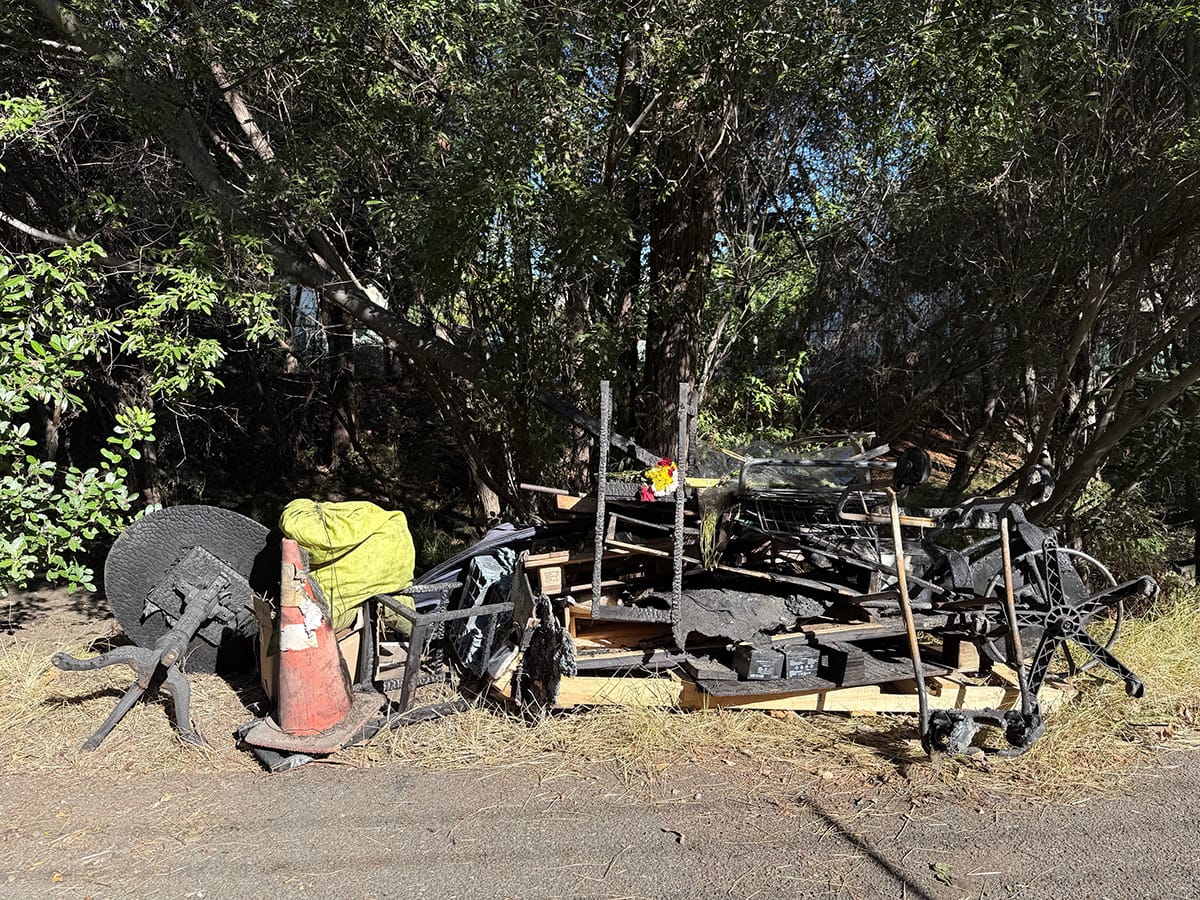
Community members expressed frustration with the city's response to date — not just in the past week, but over the years.
Humberto Ortiz, the car shop owner, said he expected more.
"It's still just a pile of mess over there where the fire was," he said Monday.
Last week, he said, he saw three or four large trucks at the fire site and thought he would see some improvements. But they didn't materialize, he said.
It wasn't just the fire, either.
He said he'd had to call the city just to ask them to empty a trash can on the creek pathway that had been "overflowing for weeks."
"It's pretty sad what's happened to the neighborhood over the years," he said. "I feel like the city could put a little bit more effort into maintaining it."
Status quo: "Recurrent, very destructive camping"
There has been some work done: A new pathway went in alongside Codornices Creek last year.
And the city of Albany has a staffer who oversees aspects of vegetation maintenance.
But the lion's share of the work, for years, has been done by volunteers, fueled by their love of the creek and the natural environment.
That includes one man, who was credited by numerous people who spoke to The Scanner, who visits Codornices daily to tackle ongoing maintenance needs.
After the fire, he dragged much of the debris up to the asphalt himself to make it easier for the city to haul away — and to limit impacts and trampling on the now exposed ground.
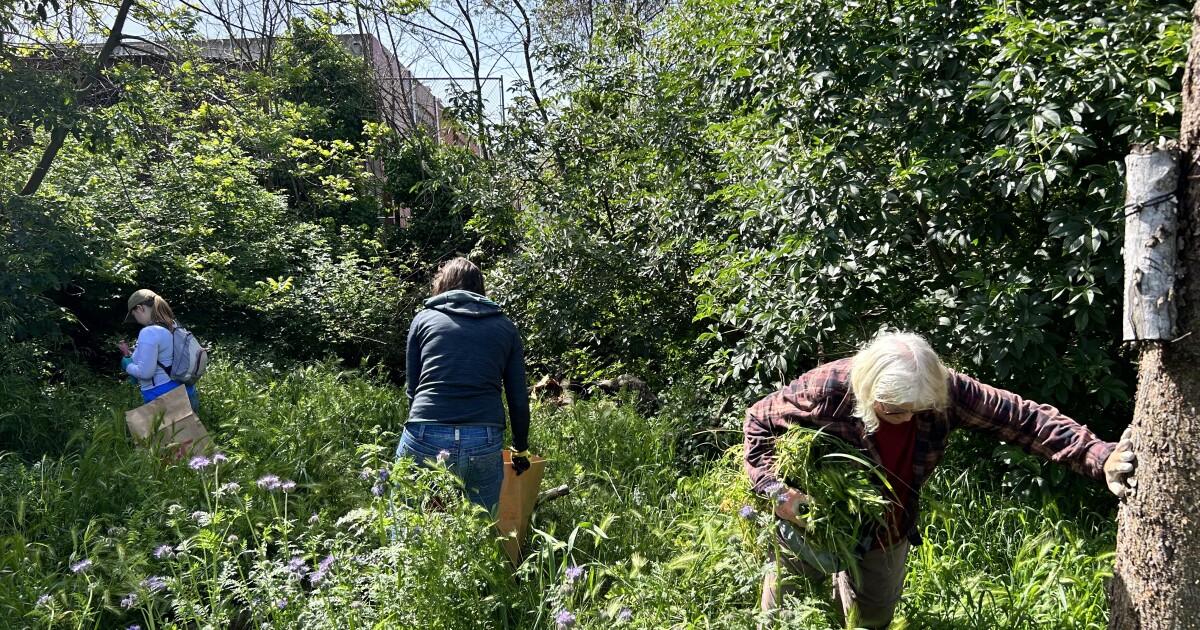
And then there's Susan Schwartz, Friends of Five Creeks founder, who's been a tireless advocate for local waterways dating back three decades.
(Last year, Bay Nature magazine gave Schwartz a "local hero" award for her efforts.)
Schwartz told The Scanner she'd like the city of Berkeley to turn the creek into a park so it would have more protection and get more attention.
The status quo just isn't working, she said. And the tents keep popping up.
"Despite everyone's best attempts, the current system leads to recurrent, very destructive camping," said Schwartz. "We have not been able to find any kind of lasting solution."
That's not for lack of trying.
As just one example, Friends of Five Creeks paid for a portable toilet for two years to reduce pollution in the creek.
But there were ongoing problems. At one point, someone tipped it over. Schwartz was able to right the toilet herself, someone else familiar with the situation told The Scanner.
But then there was a fire inside, and Five Creeks abandoned the toilet project.
The encampments are hard on the natural landscape, Schwartz said, damaging or destroying native plants and endangering the trout that rely on Codornices Creek for habitat.
In fact, Codornices is the only Berkeley waterway the trout have made their home, she said.
It's also the most intact creek in Berkeley and Albany, although portions of it run underground in culverts.
Schwartz called it "shameful" how little Berkeley had done "for its only trout stream," adding: "particularly compared with what Albany has done."
In 2010, the city of Albany undertook a massive project to improve the creek, building an outdoor classroom and restoring much of the area, work that had begun years earlier thanks to volunteers.
(Scanner founder Emilie Raguso covered the project for Albany Patch, a local news website she launched and ran at the time.)
Albany also oversees a creek vegetation maintenance fund, which has an annual budget of $25,000. But the money won't last forever.
Volunteers continue to plant natives and pull invasive species along the creek, Schwartz said. And, until the recent homeless influx, things had been going pretty smoothly.
But the encampments and the fire had left wide expanses of bare dirt — a ticking time bomb as the rainy season nears.
"The worst thing for the trout is sediment," Schwartz said. "Particularly because we started having these big storms. Two of the very good trout holes are already silted in."
Schwartz said she had concerns about what chemicals may have washed into the creek as a result of the fire. It wasn't clear exactly what blew up.
She said she reported the fire to CalEPA when it wasn't clear whether Albany or Berkeley had done so. (Neither city responded to The Scanner's inquiries about this.)
Schwartz said she is worried about any potential impacts to protected steelhead trout — and also has questions about whether authorities plan to investigate the cause of the fire.
(The city of Albany said Berkeley would investigate, but Berkeley did not respond to confirm whether that was true.)
In the days after the fire, Schwartz visited the area to take a closer look.
"I was amazed at how much stuff had been packed into that camp and how large it was," she said. "For me, the destruction, the amount of area that has now been bared and polluted to an unknown degree… I can't say it's a shock. It's just hard to take."
If the city expanded its encampment rules to the creek banks, or turned the creek into a park, Schwartz said Berkeley might be able to make some headway.
"It's not a total answer, but it's part of the answer," she said.
"I don't have an answer to how you would stop the musical chairs," she continued. "As a practical matter, it would seem that, if Albany and UC are following one policy and Berkeley is not, Berkeley is gonna pay the price."
Schwartz said there were other things Berkeley could do that would be even easier — including posting signage about how to report problems around the creek to the city's 311 customer service center.
The city pledged to do that at a meeting earlier this year, but it never happened, Schwartz said.
"Berkeley is overwhelmed," she said. "And this is not a priority."
On Monday, she said, she'd heard about yet another homeless encampment by the creek that had burned since the last fire.
"No one hurt, but mattresses and frames melted," she said. "Someone must investigate."
Read more about Codornices Creek on the Friends of Five Creeks website.



